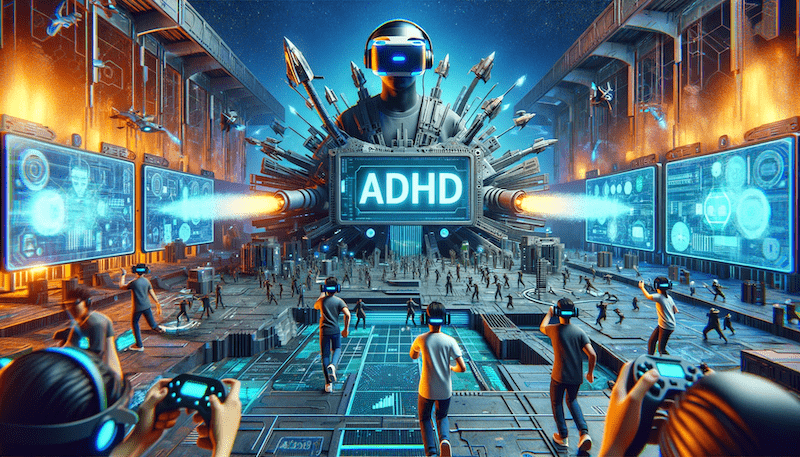
With ADHD manifesting differently across the lifespan and between genders, finding the right test is vital. Accurate diagnosis informs tailored treatment strategies that can significantly enhance quality of life for adults living with ADHD.

The cognitive and behavioural patterns associated with adult ADHD include inattention, hyperactivity, and impetuosity, which compound difficulties in occupational, academic, and interpersonal domains—resulting in multifaceted challenges that transcend mere productivity impairments.

Executive dysfunction is not an isolated condition but a manifestation of various neurological, mental health, and behavioral disorders, including ADHD and depression.

For clinical psychologists and healthcare professionals, possessing a detailed understanding and the right diagnostic tools is crucial for accurate assessment.

This article has been written with the help of Dr Adeel Sarwar, PhD, Clinical Psychologist. Navigating the world of ADHD testing can be overwhelming. However, obtaining a precise diagnosis and implementing early interventions are essential for effectively managing ADHD symptoms.

An accurate diagnosis of ADHD is critical for the successful treatment and management of the disorder. A misdiagnosis can result in patients receiving inappropriate treatment or no treatment at all, leading to significant negative impacts on their lives.

Attention Deficit Hyperactivity Disorder (ADHD) is one of the most common neurological disorders in children and adolescents. It is characterized by short attention span, hyperactivity and impulsive behavior. Traditionally, diagnosis of ADHD was done through subjective evaluation of behavior through interviews and observation.

Autism spectrum disorder (ASD) and attention deficit hyperactivity disorder (ADHD) are separate neurodevelopmental conditions, yet they frequently co-occur at remarkably high rates. This overlap can make accurate diagnosis challenging, but proper identification is crucial for tailoring care and support to meet the unique needs of individuals with both conditions.
ASD and ADHD share several overlapping characteristics including difficulties with sustained attention, distractibility, impulsivity, executive functioning deficits, social communication challenges, and emotional dysregulation. However, there are also distinct differences - ASD is primarily characterized by restricted interests, repetitive behaviors (stimming), and nonverbal communication issues, while ADHD's core symptoms revolve more around hyperactivity, impulsivity and regulating emotions.
Research shows that around 30-50% of individuals with ASD also meet criteria for ADHD, while 20-50% of those with ADHD are also on the autism spectrum.1,2 Although the conditions are separate neurodevelopmental disorders, their symptom overlap means many individuals meet the diagnostic criteria for both.
Accurately diagnosing either ASD or ADHD alone when they co-exist can be complicated due to the conditions' similarities. A 2013 study found that individuals with co-occurring ASD and ADHD exhibited greater socio-communicative deficits and repetitive behavior than those with ADHD alone.
Some key differentiators:
A comprehensive multi-disciplinary evaluation by clinicians experienced in both conditions is necessary to accurately differentiate and diagnose the potential co-occurrence.
Having both ASD and ADHD can create significant lifelong challenges across multiple domains. However, research shows utilizing appropriate interventions and supports leads to improved outcomes.5 Recommended strategies include:
A 2018 study found psychosocial interventions like cognitive behavior therapy and parent behavior management training improved ADHD and ASD symptoms in youth with both conditions.6
With proper identification, personalized evidence-based treatments and supports tailored to their specific needs, individuals with co-occurring ASD and ADHD can find great success. Early intervention is key.
While the path can be difficult, understanding one's neurodevelopmental profile and taking a strengths-based approach allows those with these conditions to thrive. Professional help from clinicians experienced in complex presentations is essential, as is a strong system of family and community-based support services.
References: